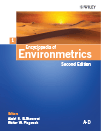Effect Size
Abstract
Broadly construed, effect size is the degree to which one distribution differs from another. While the term itself has connotations of cause and effect, the underlying idea applies to any comparison between two populations without implying causality. Suppose that one seeks to compare two populations with respect to a specified outcome. Regard the populations as a control and an exposed population. The outcome under study will have some distribution across control individuals and, if the exposure has any effect at all, a different distribution among exposed individuals. Differences between the two distributions could be assessed using any one of a number of criteria or even using several criteria simultaneously. A desire for parsimony suggests the use of a single quantity for summarizing distributional differences. Generically, such a quantity assesses the magnitude of the exposure effect, that is, the effect size.



